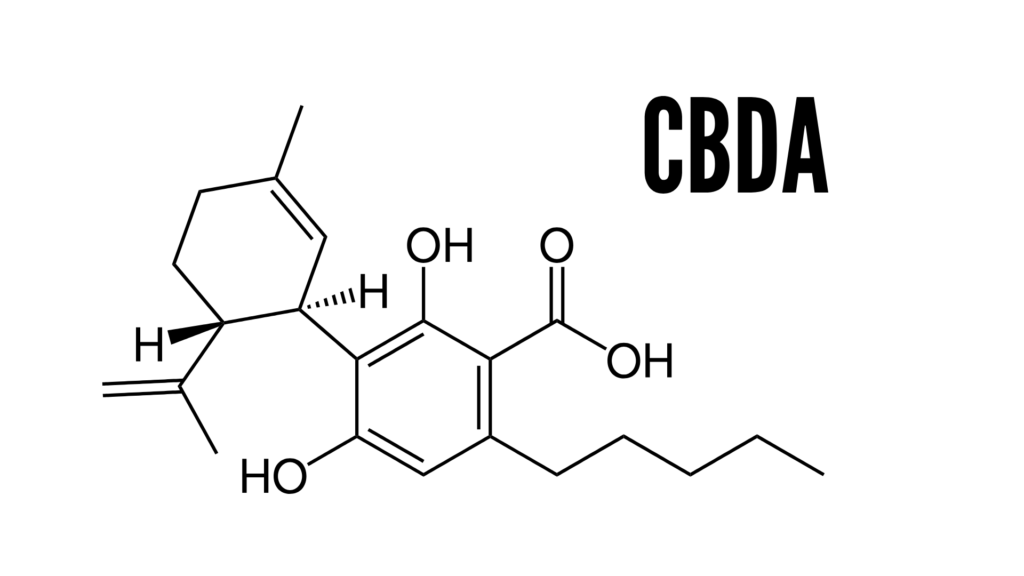Cannabidiolic acid (CBDA) is a non-psychoactive cannabinoid found in cannabis plants that acts as an acid precursor to cannabidiol (CBD). While CBD has received a lot of attention for its health benefits, its acidic counterpart, CBDA, has received less attention.

Before cannabis is decarboxylated, the cannabinoid CBD exists in an acidic form known as CBDA. Cannabis is no longer in its raw state after being heated and “decarbed,” and the compounds in the plant naturally undergo a series of chemical changes.
CBDA is no longer acidic during this transition. Instead, as CO2 is released, CBDA transforms into the chemically neutral cannabinoid CBD. Simultaneously, when CBDA is converted to CBD, the result is an intensely therapeutic compound with the potential to heal. CBD is not “neutral” in this sense, but rather extremely potent and capable of treating conditions ranging from mild anxiety to chronic pain.
CBDA may be most effective when combined with other cannabinoids and terpenes. The entourage effect refers to this synergy of action. As a result, CBDA may enhance the therapeutic potential of CBD and vice versa. CBDA may also enhance the potency of terpenes such as limonene and pinene.
CBDA is probably not as potent in isolation as it has the potential to be in the entourage effect of “chemical teamwork.” If you are sensitive to tetrahydrocannabinol, look for products labelled “full spectrum” or “broad spectrum” to experience the entourage effect (THC).
CBDA has numerous potential health benefits and medical applications. According to scientific evidence, the following are some common applications for this acidic cannabinoid:
CBD has received extensive research, whereas CBDA has received relatively little attention. Because research on the potential health benefits of CBDA is limited and most studies are based on animal models, human clinical trials are required.
CBDA, like CBD, has a limited number of negative side effects. The majority of CBDA’s potential side effects are mild, as the cannabinoid is not as active in the body (bioactive) as CBD. Here are some of the possible side effects of CBDA use:
These side effects are more likely to occur if you use CBDA in high doses or frequently throughout the day. Consult your doctor if you are experiencing any bothersome or persistent side effects.
There is a long list of medications that could interact with CBDA and CBD, ranging from antihistamines to antidepressants. Before combining CBDA with any prescription or over-the-counter medication, consult with your doctor or pharmacist.